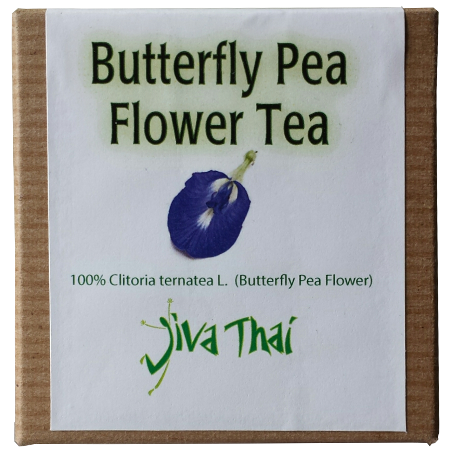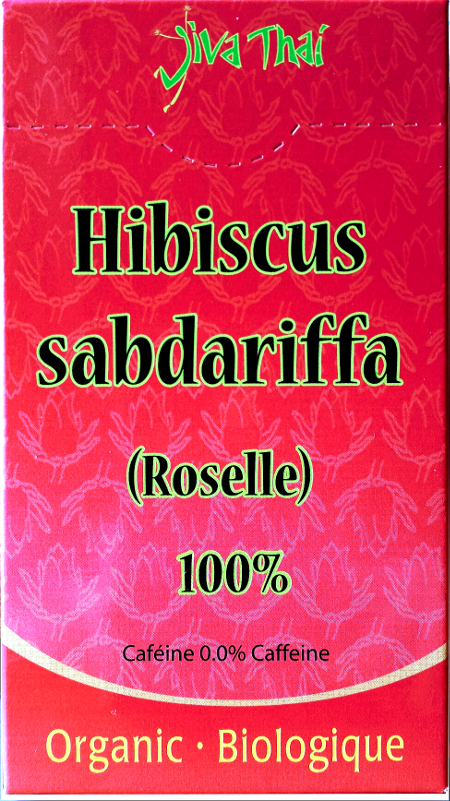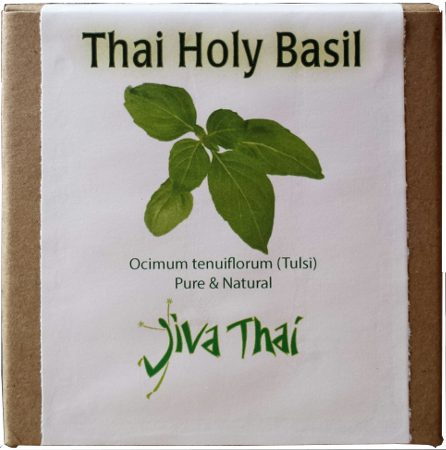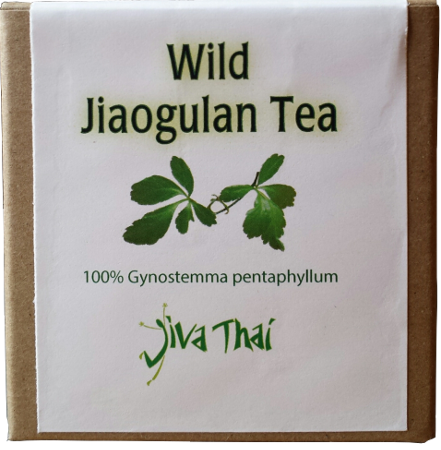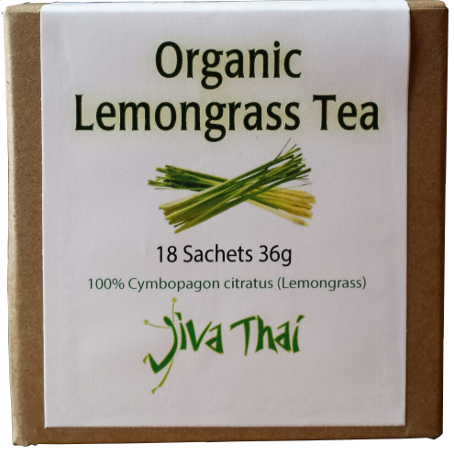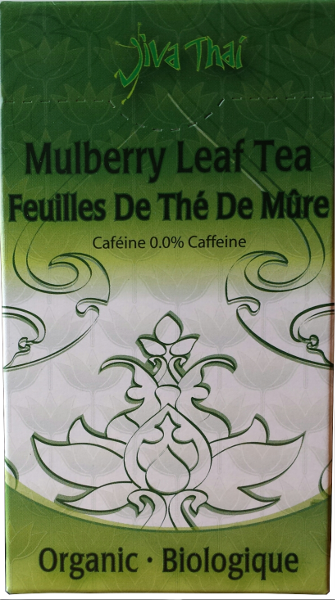- Details
- Category: Herbal Tea
Bael Fruit Tea
|
Bitter Melon Tea |
Butterfly Pea Flower Tea |
Ginger Root Tea
|
Hibiscus Calyx Tea |
Holy Basil(Tulsi)
|
Jiaogulan Leaf Tea(Five-Leaf Ginseng)
|
Lemongrass Tea
|
Moringa Leaf Tea
|
|
White Mulberry Leaf TeaMorus Alba |
- Details
- Category: Herbal Tea
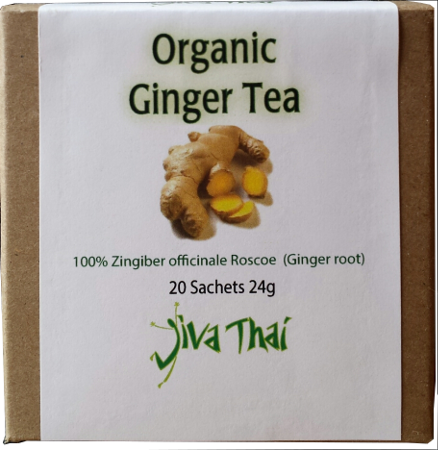 |
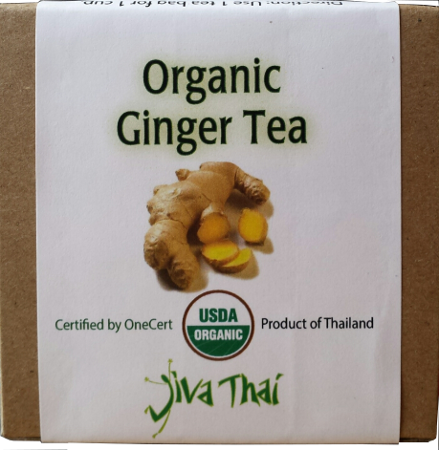 |
Ginger Root (Zingiber officinale Roscoe) is used as a culinary herb and medicine. In traditional medicine, the whole plant can be used for treating various symptoms. For example, the root is used for nausea, increasing appetite, abdominal bloating, cough, mucus, digestion by increasing the release of bile, stomach ulcer, and hypertension. Ginger stalk is used as carminative medicine, for treating calcali, aiding digestion, ridding parasites, etc. Its flower is for refreshing, ridding parasites, digestion, treating calcali, watery eye, strangury, dysentery, etc. Also, the fruit is for lowering fewer.
Several scientific studies have confirmed its medicinal properties in dizziness, travel sickness, morning sickness in pregnancy, nausea from cancer treatment (especially in leukemiai). A study found that consuming 940g of ginger powder helped relieve nauseating in dizzinessii. Eighty volunteers who took 1g of ginger root per day experienced less seasickiii. Both ginger and vitamin B6 can help reduce nausea and vomiting in pregnant women. It is found that taking 1.05g of ginger per day is as effective as taking 75g/day of vitamin B6 in relieving nausea in early pregnancyiv. No side effect was found in 187 volunteered pregnant women and their babiesv. Studies also found that ginger (2g) help reduce nausea in women patient after gynaecological surgeryvi.
Many components in ginger that aids digestion and bloated and reduces bloated stomach are such as menthol, cineole, shogaol, acetone, gingerol, bomeol, fenchone, 6-gingerol, 10-ginerol, etc. Some of these components create propulsive movement and hence act as carminativeviiviii. Ginger and ulcer medicine that has ginger as a components (10-70%) are effective in treating stomach ulcer, reducing the release of acid or enzyme (pepsin). Therefore, they help relieve stomach painix.
In addition, several research studies confirmed the anti-inflammatory property of ginger root. There was an experiment on 28 arthritis patients, 18 osteoarthritis patients, and 10 people with muscular discomfort. After taking ginger powder in different doses from 3 months to 2.5 years, the result showed 75% of all arthritis and osteoarthritis patients had less pain and swollen, and all patients with muscular discomfort had no pain. This is due to the inhibitor effect of ginger in deriving prostaglandin and leukotrienex. Inflammation, pain, swollen and stiffness had reduced in arthritic patients who took ginger 5g/day for 3 monthsxi. Another research compared the effectiveness of ginger (at 30mg twice daily in extract form), ibuprofen (400mg trice daily) and placebo in 120 osteoarthritis patients for one month. The study found that both ginger and ibuprofen were equally effective in reducing inflammation, stiffness, pain and swollenxii.
iPace JC. Oral ingestion of encapsulated ginger and reported self-care actions for the relief of chemotherapy-associated nausea and vomiting. Dissertations Abstracts Int 1987;47:3297-B.
iiMowrey DB, Clayson DE. Motion sickness, ginger, and psychophysics. Lancet 1982:655-7.
iiiGrontved A, Brask T, Kambskard J, Hentzer E. Ginger root against seasickness: A controlled trial on the open sea. Acta Otolaryngol 1988;105:45-9.
ivSmith C, Crowther C, Willson K, et al. A randomized controlled trial of ginger to treat nausea and vomiting in pregnancy. Obstet Gynecol (Hagerstown, Md, United States) 2004;103(4):639-45.
vPortnoi G, Chng L-A, Karimi-Tabesh L, et al. Prospective comparative study of the safety and effectiveness of ginger for the treatment of nausea and vomiting in pregnancy. Am J Obstet Gynecol 2003;189(5):1374-7.
viVisalyputra S, Petcpaisit N, Somcharoen K, Choavaratana R. The efficacy of ginger root in the prevention of postoperative nausea and vomiting after outpatient gynecological laparoscopy. Anaesthesia 1998;53(5):506-10.
viiYamahara J, Huang Q, Li Y, Xu L, Fujimura H. Gastriointestinal motility-enhancing effect of ginger and its active constituents. Chem Pharm Bull 1990;38(2):430-1
viiiSuekawa M, Ishige A, Yuasak K, Sudo K, Aburada M, Hosoya E. Pharmacological studies on ginger I. Pharmacological actions of pungent constituents, 6-gingerol and 6-shogaol. J Phar macobio-Dyn 1984; 7(11):836-48.
ixCai J. Manufacture and application of soft capsule for treating stomach ache. Faming Zhuanli Shenqing Gongkai Shuomingshu Cn 1733291, 2006:20pp.
xSrivastava KC, Mustafa T. Ginger (Zingiber officinale) in rheumatism and musculoskeletal disorders. Med Hypoth 1992;39(4):342-8.
xiSrivastava KC, Mustafa T. Ginger (Zingiber officinale) and rheumatic disorders. Med Hypoth 1989;29(1):25-8.
xiiHaghighi M, Khalvat A, Toliat T, et al. Comparing the effects of ginger (Zingiber officinale) extract and ibuprofen on patients with osteoarthritis. Archives Of Iranian Medicine 2005;8(4):267-71.
- Details
- Category: Herbal Tea
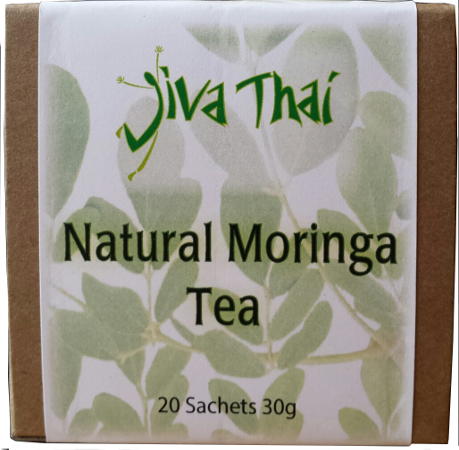 |
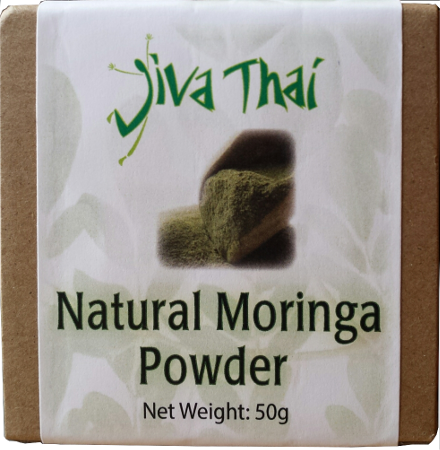 |
Moringa oleifera or drumstick tree has long been a highly valued plant. Different parts of this tree have an impressive range of medicinal properties with high nutritional value. The plant provides a rich and rare combination of zeatin, quercetin, β-sitosterol, caffeoylquinic acid and kaempferol. The leaves are the most nutritious part of the plant. It is a significant source of vitamin B6, vitamin C, provitamin A as beta-carotene, magnesium and protein, among other nutrients reported by the USDA, shown in the table below.
|
Nutrients |
Common food |
Moringa Leafs |
|
|---|---|---|---|
|
Vitamin A |
Carrot |
1.8 mg |
6.8 mg |
|
Calcium |
Milk |
120 mg |
440 mg |
|
Potassium |
Banana |
88 mg |
259 mg |
|
Protein |
Yogurt |
3.1 g |
6.7 g |
|
Vitamin C |
Orange |
30 mg |
220 mg |
In addition to its high nutritional value, it acts as cardiac and circulatory stimulants, possess anti-tumor, anti-cancer, anti-inflammatory, anti-ulcer, diuretic, anti-hypertensive, blood sugar lowering, cholesteral lowering, antioxidant, hepatoprotective, antibacterial and antifungal activities. Recent studies have confirmed these properties.
Our moringa tea and moringa powder is grown naturally in a tea orchard without the use of chemical fertilizers and pesticides. We also use non-chlorine bleach tea bags for our moringa tea product.
Directions
Moringa Tea: Use one cup of boiling water per one tea bag. Let steep for 5 minutes. Enjoy!
Moringa powder: Use 1/4 - 1/2 teaspoon in hot water and drink as tea. Put one teaspoon in your smoothie. Mix powder in soup, porridge, or batter of bake goods for extra nutrition.
- Details
- Category: Herbal Tea
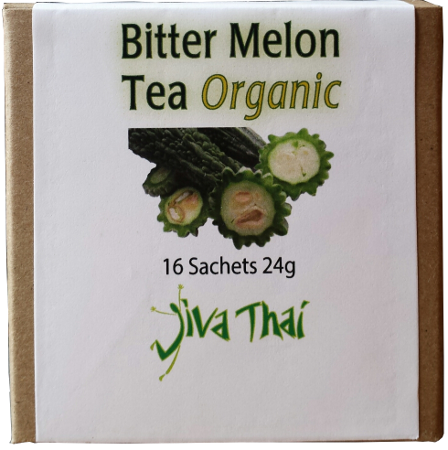 |
 |
Bitter melon or bitter gourd is grown through out the tropical and sub-tropical areas. Its bitter taste helps stimulates digestion and appetite.
The pods are rich in phytonutrients like dietary fiber, minerals, vitamins and anti-oxidants. Several health benefiting flavonoids and minerals have been identified in bitter melon, for example, beta-sitosterol-d-glucoside, citrulline, GABA, lutein, lycopene and zeaxanthin, ß-carotene, α-carotene, calcium, potassium (twice of bananas), vitamin A, C, B1, B3, B5, B6, phosphorus, iron, zinc, potassium, manganese and magnesium.
Bitter melon can be a powerful anti-diabedic (type 2). Polypeptide-P is one the phytonutrients in bitter melon that is known to lower blood sugar levels. It composes hypoglycemic agent called charantin which increases glucose uptake and glycogen synthesis in the cells of liver, muscle and adipose tissue.
Other studies show that it is also effective in treating HIV/AIDS, cold and flu, viruses, cancer and tumors, high cholesterol, cardioprotective, and psoriasis.
Cautions: high doses of bitter melon can cause abdominal pain and diarrhea. It is not suitable for small children, pregnant women (due to its abortative properties), and people with hypoglycemia. Diabetic patients taking hypoglycemic drugs (chlorpropamide, glyburide, phenformin, etc) or insulin should use bitter melon only under medical supervision.
- Details
- Category: Herbal Tea
Pandanus (pandan) or screw pine leaf is widely used in Thai desserts for its refreshing and aromatic properties, as well as a natural food colour. Pandan leaf is believed to be a restorative, deodorant indolent and phylactic, promoting a feeling of well-being and a counter to tropical latitude.
In traditional medicine, pandanus leaf is used as cardiotonic and also for rehydration, measles and other skin diseases. Pharmaceutical studies show that pandanus helps lower blood sugar, reduce blood pressure; lower pulsation, and micturate.
Pandanus is abundant in antioxidant. A compound named 4-hydroxybenzoic acid from Pandanus showed a hypoglycemic effect and increased serum insulin levels and liver glycogen content in normal rats.
Also, methanolic extracted from pandan leaf showed anti-inflammatory activity. Pandanin (a lectin) is an unglycosylated protein also presented antiviral activities against human viruses, herpes simplex virus type-1 (HSV-1) and influenza virus (H1N1) with 3 day’s EC50 of 2.94 and 15.63 μM, respectively.
Some other health benefits of pandan leaf:
- Treats leprosy, smallpox and wounds.
- Helps reduce fever.
- Relives headache and arthritis
- Treatment for ear pains
- Functions as a laxative for children
- Eases chest pains
- Helps in speeding up the recuperation of women who have just given birth and are still weak
- Reduces stomach spasms and strengthens the gum
Page 1 of 2



